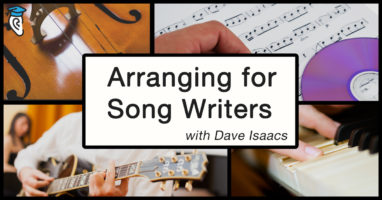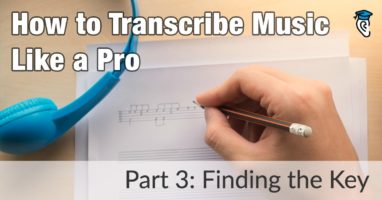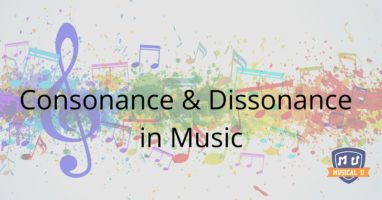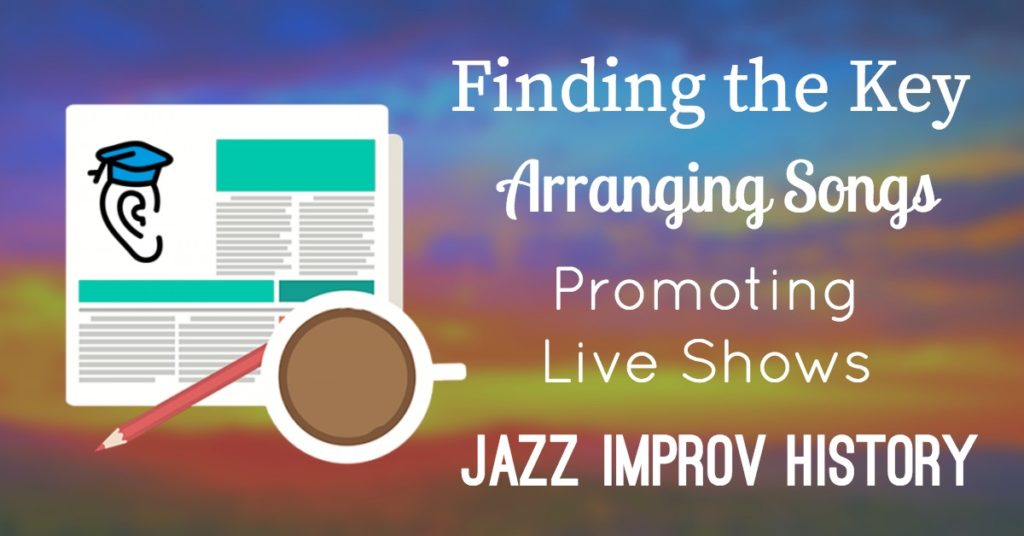The world of music is one of constant change. Whether it’s a key change, the evolution of jazz improvisation over the years, the shift from consonance to dissonance in a piece, transforming a simple song into a full track through arranging, learning new tactics for promoting live shows or the changing face of online music education, there’s every reason to stay alert to the latest developments, from minute to minute and year to year.
This week we have a variety of new resources to help you stay up-to-date and develop the knowledge and skills you need to succeed in the ever-changing world of modern music making.
Arranging for Songwriters
Writing a successful song can be tricky. Coming up with a catchy melody and writing good lyrics can be hard enough, but what about actually arranging the song for musicians to play?
Whether you’re a beginner song writer or you have a pile of notebooks and demo tapes full of your creations, the chances are that you’ve struggled at some point with transforming your simple song into a fully-fledged arrangement ready for recording or live performance.
 Dave Isaacs is a guitar teacher and performer known as the “Nashville Guitar Guru” whose approach to teaching develops not only guitar playing but the whole musician, building the skills, confidence, and individual style that create artistry. In this guest post for our site Dave lays out the three essential aspects for song-writers to consider, as well as answering the question: “Do you need to know music theory?”. Learn more in Arranging for Songwriters and Dave’s video below:
Dave Isaacs is a guitar teacher and performer known as the “Nashville Guitar Guru” whose approach to teaching develops not only guitar playing but the whole musician, building the skills, confidence, and individual style that create artistry. In this guest post for our site Dave lays out the three essential aspects for song-writers to consider, as well as answering the question: “Do you need to know music theory?”. Learn more in Arranging for Songwriters and Dave’s video below:
Dave’s post picks up on three key aspects of arrangement. In this ongoing series on the basics of music arrangement the Splice Blog suggests there are six stages, and Songwriting Scene has a helpful list of seven things you should be considering when arranging your songs.
How to Find the Key By Ear
As the Von Trapp children would tell you, solfa is “how you know the notes to sing”. But what about knowing the notes to play?
 Playing by ear, improvising, or transcribing music requires an extra step beyond relative pitch or solfa skills: you need to know what key the music is in. Learn a simple process you can use to find the key of a song by ear.
Playing by ear, improvising, or transcribing music requires an extra step beyond relative pitch or solfa skills: you need to know what key the music is in. Learn a simple process you can use to find the key of a song by ear.
This topic is so important that we just added a whole training module on it inside Musical U this week: Finding the Key.
Want to find the key of a tune in jazz? Learn jazz Standards makes it simple: Their Rule for Finding the Key of a Tune is almost always reliable in jazz music. Speaking of jazz…
The Evolution of Jazz Improvisation
 Jazz is the genre most often associated with musical improvisation, and the 100-year history of jazz is a perfect showcase of how improvisation can change and involve as artists innovate and experiment.
Jazz is the genre most often associated with musical improvisation, and the 100-year history of jazz is a perfect showcase of how improvisation can change and involve as artists innovate and experiment.
Take a listen to the “roaring ’20s”, swing, bebop, cool jazz, hard bop, free jazz, avant garde, fusion, and contemporary jazz and hear how jazz improvisation has evolved through its history: Jazz Improvisation Evolution: A history of jazz by ear
Of course the history of jazz is a deep subject and it’s worth diving deeper. For a thorough history of jazz (and corresponding world events), check out this fantastic interactive timeline from Jazz in America. Or for a super-speedy version, Dr. Jazz sums it up for you on saxophone in 90 seconds:
For more listening examples of jazz throughout its history, HubPages will take you on a visual and aural tour of jazz evolution.
What exactly is “Musical U”? New Video Tour Reveals All
 This is a personal one for me this week. I’d been receiving (too many!) emails from people who were interested in joining Musical U but first had a few questions about what exactly is included and how it works.
This is a personal one for me this week. I’d been receiving (too many!) emails from people who were interested in joining Musical U but first had a few questions about what exactly is included and how it works.
I realised that although we’d explained what and who Musical U is for we hadn’t been doing a very good job of explaining what Musical U is! For a clear-cut explanation and demonstration, check out “What exactly is Musical U? Peek inside and find out“.
There were a couple of great new posts over on the MU blog this week too:
Consonance and Dissonance in Music
 Music can be seen as the artful manipulation of tension and release, playing with the listener’s expectations so as to engage, inspire and connect with them. One of the major tools for establishing tension and providing release is the idea of consonance and dissonance. Discover what that means and how it’s used in this tutorial on consonance and dissonance in music.
Music can be seen as the artful manipulation of tension and release, playing with the listener’s expectations so as to engage, inspire and connect with them. One of the major tools for establishing tension and providing release is the idea of consonance and dissonance. Discover what that means and how it’s used in this tutorial on consonance and dissonance in music.
Want a quick example of what consonance and dissonance sound like? Scientist Jason Goldman lays it out simply here:
Do you find dissonance unpleasant? Assume that everybody does? Well, that might not quite be true! New research conducted with a remote Amazonian tribe suggests that people used to non-western music have no preference for consonant over dissonant notes. Classical Musicians Everywhere explains.
Dissonance may be unpleasant but just imagine a drama or comedy entirely devoid of conflict. That would be pretty unpleasant in its own way. “Dissonance is delicious”, according to Dale McGowan in this excellent tutorial.
How to Promote Your Gigs
 Continuing their series on Performing Live, this week the team tackled the crucial question: once the music is prepared and the gig is booked, how do you actually get fans to come to your show? Get the tactics you need in Performing Live, Part 4: Promotion.
Continuing their series on Performing Live, this week the team tackled the crucial question: once the music is prepared and the gig is booked, how do you actually get fans to come to your show? Get the tactics you need in Performing Live, Part 4: Promotion.
As the article explains, you’ll need to work closely with the venue to make sure your promotion (and theirs) is appropriate. Here’s some good advice on that front from musician Zachary Evans who books and promotes his own gigs and 1st Degree Entertainment provide some insights from the other side.
Indie on the Move features a fascinating guest post by regular gigger Phil Johnson on 33 gig promotion tips and which ones work.
Phew! Being a musician means a non-stop whirlwind of new ideas and inspiration, doesn’t it? I hope these new resources help you stay up to date on the latest, and help you continue to make the most of the musical world around you.







